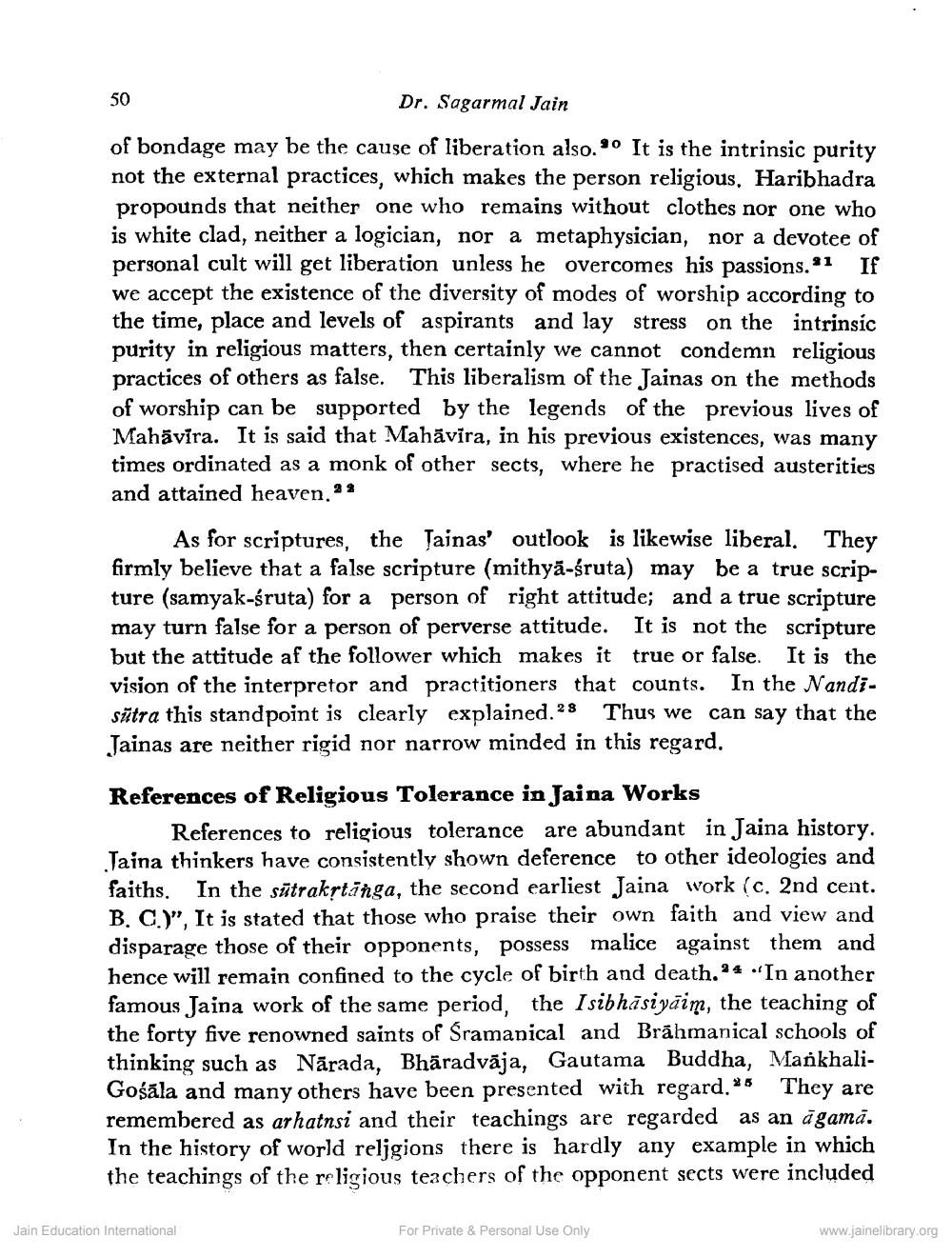Book Title: Philosophical Foundation of Religious Tolerance in Jainism Author(s): Vilas Sangve Publisher: USA Federation of JAINA View full book textPage 8
________________ 50 Dr. Sagarmal Jain of bondage may be the cause of liberation also. 9° It is the intrinsic purity not the external practices, which makes the person religious. Haribhadra propounds that neither one who remains without clothes nor one who is white clad, neither a logician, nor a metaphysician, nor a devotee of personal cult will get liberation unless he overcomes his passions. 21 If we accept the existence of the diversity of modes of worship according to the time, place and levels of aspirants and lay stress on the intrinsic purity in religious matters, then certainly we cannot condemn religious practices of others as false. This liberalism of the Jainas on the methods of worship can be supported by the legends of the previous lives of Mahävira. It is said that Mahāvira, in his previous existences, was many times ordinated as a monk of other sects, where he practised austerities and attained heaven. 2 3 As for scriptures, the Tainas' outlook is likewise liberal. They firmly believe that a false scripture (mithya-śruta) may be a true scripture (samyak-śruta) for a person of right attitude; and a true scripture may turn false for a person of perverse attitude. It is not the scripture but the attitude af the follower which makes it true or false. It is the vision of the interpretor and practitioners that counts. In the Nandisūtra this standpoint is clearly explained.28 Thus we can say that the Jainas are neither rigid nor narrow minded in this regard. References of Religious Tolerance in Jaina Works References to religious tolerance are abundant in Jaina history. Taina thinkers have consistently shown deference to other ideologies and faiths. In the sūtrakrtänga, the second earliest Jaina work (c. 2nd cent. B. C.)". It is stated that those who praise their own faith and view and disparage those of their opponents, possess malice against them and hence will remain confined to the cycle of birth and death. 24 .In another famous Jaina work of the same period, the Isibhāsiyāim, the teaching of the forty five renowned saints of Śramanical and Brāhmanical schools of thinking such as Nārada, Bhāradvāja, Gautama Buddha, MankhaliGośāla and many others have been presented with regard. 25 They are remembered as arhatnsi and their teachings are regarded as an agama. In the history of world religions there is hardly any example in which the teachings of the religious teachers of the opponent sects were included Jain Education International For Private & Personal Use Only www.jainelibrary.orgPage Navigation
1 ... 6 7 8 9 10 11 12 13 14
